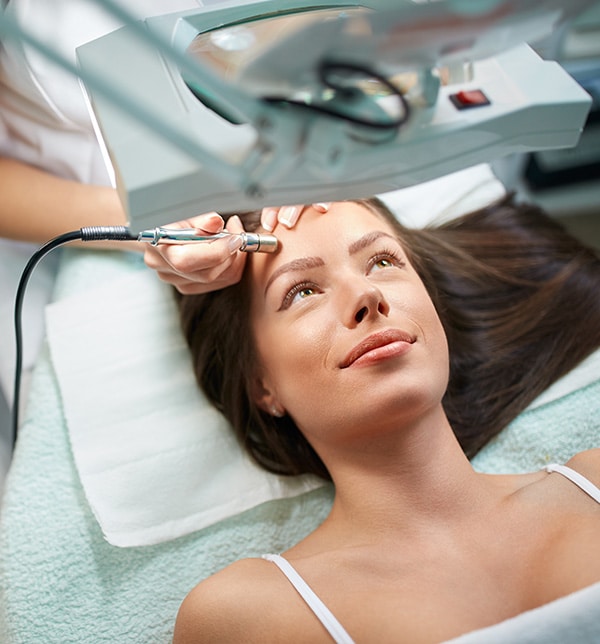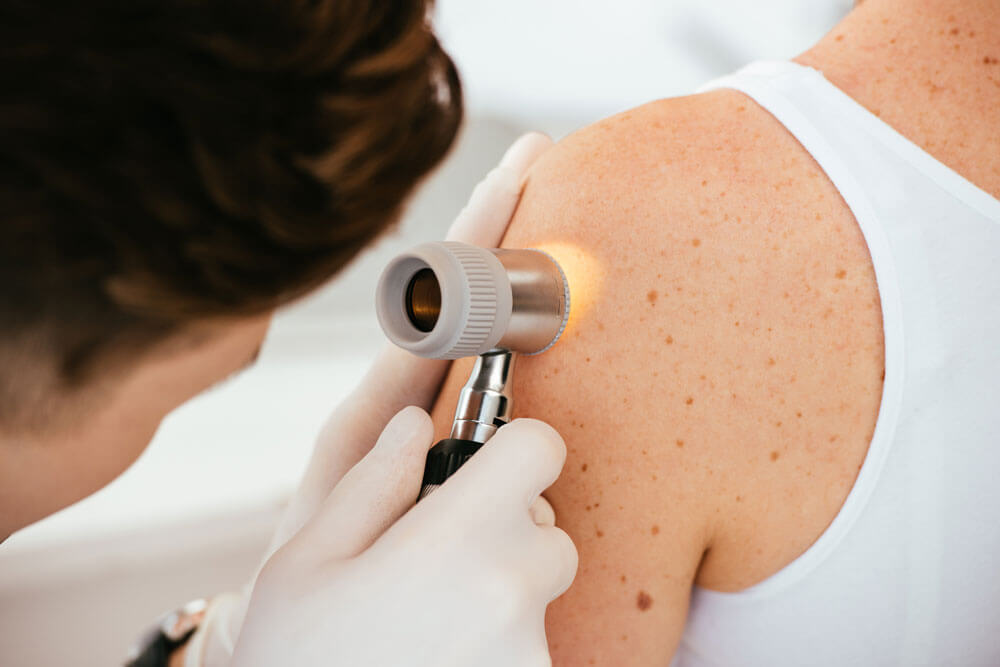The Function of a Skin Doctor in Detecting and Treating Various Skin Conditions
The function of a skin specialist extends much beyond basic skin treatment; it includes the elaborate procedures of detecting and treating a wide selection of skin conditions. The intricacy of skin conditions typically requires a diverse strategy that consists of not just medical interventions yet additionally individual education and preventative approaches.
Importance of Dermatological Knowledge
The knowledge of skin doctors is crucial in the medical diagnosis and administration of skin conditions, as they possess specialized expertise that prolongs past general clinical training. This innovative understanding is vital for accurately recognizing a vast array of skin problems, which typically offer with overlapping symptoms that can puzzle non-specialist experts. Skin doctors are trained to separate in between various skin disorders, making sure ideal treatment plans are implemented swiftly.
Additionally, the field of dermatology encompasses a special mix of clinical skills and advanced modern technology. Dermatologists use sophisticated analysis devices, such as dermatoscopes and skin biopsies, to analyze skin sores and establish their nature. This technical effectiveness permits very early discovery of possibly serious conditions, including skin cancers, which can significantly improve person end results.

Common Skin Problems Detected
Countless skin disorders can offer with differing degrees of severity and intricacy, making skin-related experience vital for accurate diagnosis and monitoring. Among the most common problems are acne vulgaris, eczema, psoriasis, and dermatitis.
Acne vulgaris, identified by the visibility of pustules, papules, and comedones, mostly affects teenagers yet can persist right into their adult years. Dermatitis, or atopic dermatitis, is a chronic inflammatory problem that results in completely dry, itchy, and inflamed skin. Psoriasis is an autoimmune condition that manifests as red, scaly plaques, largely on extensor surfaces, and can dramatically affect the lifestyle.
Other typical problems include rosacea, which provides with face flushing and visible blood vessels, and seborrheic dermatitis, usually resulting in dandruff and oily patches on the scalp. Fungal infections, such as tinea pedis (professional athlete's foot) and tinea corporis (ringworm), are also often run into.
These varied conditions need a thorough understanding of pathophysiology, as well as knowledge of restorative alternatives, to guide efficient treatment methods - Dermatologist Raleigh NC. Via exact diagnosis, dermatologists can offer tailored administration strategies that resolve both the symptoms and underlying causes of these common skin disorders
Diagnostic Methods Utilized
Exactly how do skin doctors precisely detect numerous skin problems? Skin doctors use a mix of professional analyses, analysis devices, and specialized strategies to make certain precise recognition of skin problem. The first action commonly entails a comprehensive case history and physical examination. Throughout this procedure, skin doctors analyze the person's signs and symptoms, start, duration, and any potential triggers.
One of the primary analysis techniques is dermoscopy, which makes use of a portable device to multiply skin lesions, enabling comprehensive evaluation of frameworks not visible to the naked eye. Furthermore, skin biopsies are regularly executed, where a small example of skin is removed for histopathological evaluation. This method is important for detecting conditions such as cancer malignancy and other skin cancers cells.
Patch screening is another critical approach employed to identify call dermatitis by exposing percentages of potential allergens to the skin. Furthermore, laboratory tests, including blood examinations and dermatology places near me societies, may be conducted to dismiss systemic concerns or infections. Jointly, these diagnostic methods permit dermatologists to develop a comprehensive understanding of skin conditions, bring about accurate diagnoses and educated patient administration.

Therapy Choices Readily Available
A wide range of treatment choices is readily available for additional resources managing skin disorders, tailored to the certain problem and specific person needs. Dermatologists utilize both systemic and topical treatments, depending on the intensity and kind of skin problem.
For more severe conditions, systemic treatments may be necessary. These include oral medications such as prescription antibiotics for bacterial infections and immunosuppressants for autoimmune disorders. Biologics, a newer class of drugs, have shown efficacy in treating chronic inflammatory problems like psoriasis and atopic dermatitis.
In addition to pharmacologic treatments, skin doctors might advise step-by-step alternatives such as laser photo-therapy, chemical, or treatment peels (Dermatologist Raleigh NC). These treatments can resolve coloring problems, acne scarring, and other skin irregularities effectively
Moreover, way of living alterations, including proper skin care regimens and sun protection, play an essential role in the total monitoring of skin conditions. By combining these therapy techniques, dermatologists intend to boost patient outcomes and enhance lifestyle for those affected by skin problem.
Individual Education and Assistance
Empowerment with knowledge is essential in the monitoring of skin conditions, as patient education and learning and assistance considerably affect treatment end results. Skin specialists play a critical duty in supplying clients with thorough info about their conditions, therapy choices, and self-care approaches. Efficient interaction fosters a collaborative environment where people can proactively take part in their very own treatment.

Assistance extends beyond education and learning; it encompasses emotional confidence and ongoing motivation. Skin doctors should develop a safe space for visit individuals to share their concerns and ask concerns. Resources such as informative handouts, websites, and support system can additionally encourage patients, enabling them to get in touch with others facing similar challenges.
Eventually, a knowledgeable person is most likely to engage in their treatment journey, resulting in much better adherence, contentment, and boosted wellness results. The skin doctor's role in person education and learning and support is basic to optimizing the administration of skin conditions.
Verdict
In final thought, skin doctors play an important duty in the reliable medical diagnosis and therapy of a variety of skin problems. Their customized experience, incorporated with innovative analysis methods and tailored therapy strategies, guarantees comprehensive look after patients. The focus on individual education cultivates aggressive administration of skin health, encouraging individuals to take informed activities concerning their skin care regimens. The payments of skin doctors substantially enhance the top quality of life for those impacted by skin conditions.
The function of a dermatologist prolongs far beyond fundamental skin treatment; it incorporates the complex processes of detecting and dealing with a large range of skin disorders. Skin doctors use innovative diagnostic devices, such as dermatoscopes and skin biopsies, to assess skin lesions and establish their nature. Ultimately, the specialized training and experience of skin specialists are crucial in offering detailed treatment for clients with skin conditions.
Additionally, skin biopsies are often executed, wherein a little example of skin is gotten rid of for histopathological evaluation. Collectively, these diagnostic methods enable skin doctors to formulate an extensive understanding of skin conditions, leading to precise medical diagnoses and educated patient management.